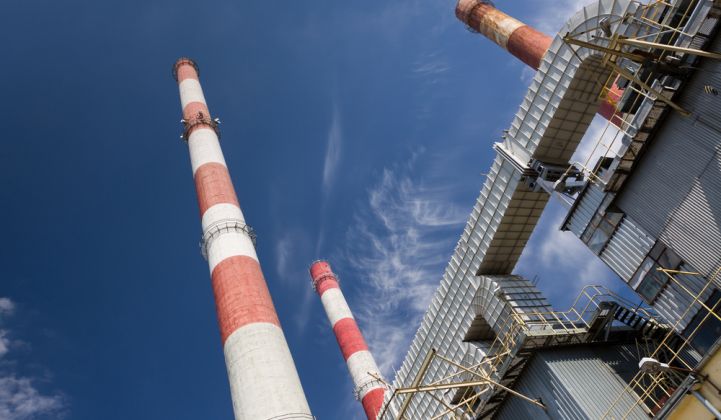In a 2012 executive order, President Barack Obama called for the U.S. to add 40 gigawatts of new combined heat and power (CHP) capacity by 2020. The White House said the goal would spur new capital investment of between $40 billion and $80 billion and eliminate the equivalent of emissions from 25 million cars.
But between 2012 and 2016, the U.S. added just 790 projects: a measly 2.5 gigawatts.
Now, Trump’s recently signed budget and tax reform bills may give the market a new chance at growth.
Though the laws were a mixed bag for clean energy technologies, several policy mechanisms could help push some CHP projects across the financial finish line.
The extension of the 10 percent Investment Tax Credit for combined heat and power -- along with other “orphan” energy technologies -- will certainly help the bottom line for a technology that, as GTM Research contributing analyst Mei Poon wrote, remains underutilized in the U.S. But with the bonus depreciation rate raised to 100 percent, developers can now also write off the entirety of a project’s cost in its first year rather than spreading that depreciation over time.
Consulting firm ICF argues that those changes, plus the energy industry’s increased emphasis on resilience, mean “the business case for CHP has never looked better.”
If developers and investors takes notice, it could help buoy a technology with potential “much greater than recent market trends indicate,” according to Poon.
Analysis from ICF found that for a sample 15-megawatt project in the Southeast, the tax changes bump up rates of return by about 6 percent, yielding $900,000 a year. That additional cash may seem small compared to the $23.1 million price tag of the project, but over its lifetime the net present value improves from $61.1 million to $72.4 million under the changes.
Poon’s 2016 GTM Research report noted a handful of obstacles to CHP adoption, including difficulties with interconnection, differences in utility rate structures, and uncertainty created by the Trump administration’s disinterest in climate policy. But ICF said the tax changes mitigate an important one: the upfront financial hurdle.
“Similar to someone going to the store and looking at an incandescent bulb versus an LED bulb, even if you know the LED bulb will save you money over time, it can be hard to pay that money upfront,” said Anne Hampson, a principal with ICF who leads the firm’s CHP group. “The tax credit is a really great way to take some of the bite out of that upfront payment.”
CHP generally makes more sense in areas of the country where electricity rates are higher, like California and the Northeast, Hampson said. The tax changes, though, could help push projects into financial viability in areas on the cusp, where rates are increasing. She points to the Midwest, the Mid-Atlantic and the South as possible next frontiers for CHP adoption.
The projects that will reap the most advantage from the changes sit in the range of 10 to 15 megawatts, such as medium-sized industrial facilities. That’s where Hampson said economies of scale help developers "get the most bang for [their] buck.” The ITC only applies to a project’s first 15 megawatts, but can be applied to projects as large as 50 megawatts.




